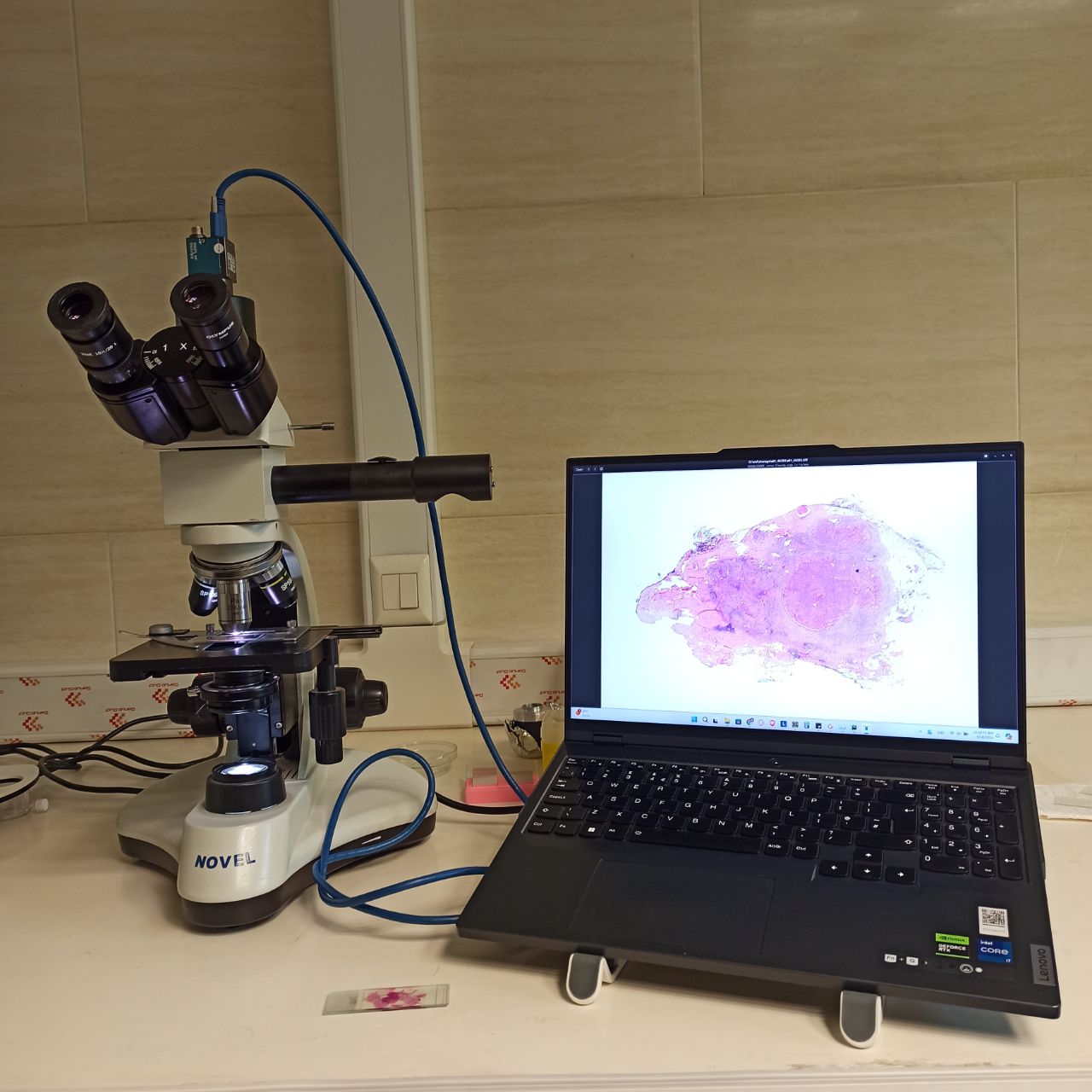With advancements in medical technology, virtual microscopes have become one of the key tools in pathology and digital diagnostics. This advanced technology enables high-resolution viewing, analysis, and sharing of digital slides, making diagnostic processes simpler and more accurate. Virtual microscopes use digital scanning technology to digitize pathology slides, allowing specialists to examine these images without spatial or temporal limitations and provide precise results.
Today, this tool plays a significant role in improving the efficiency of laboratories and hospitals, helping specialists perform diagnostic processes faster and with greater accuracy. Additionally, virtual microscopes are also used in education, enabling medical students to view and analyze various slides digitally. On this page, we aim to provide a comprehensive introduction to this technology, its benefits, and applications, as well as key points for selecting the best virtual microscope tailored to the needs of your laboratory or hospital.
Alongside the scientific introduction of this technology, examples of its successful applications worldwide are provided to help you better understand its impact. If you are looking for comprehensive information to upgrade your pathology equipment or expand your knowledge in this field, this content is for you.
What is a Virtual Microscope?
A virtual microscope is one of the latest technologies in digital pathology, enabling the viewing and precise analysis of samples in digital form. This technology allows users to examine whole-slide images of samples without the need for traditional microscopes. Overall, virtual microscopes streamline workflows and provide pathologists and researchers with access to more accurate and transparent information.
Benefits of Using a Virtual Microscope
Using a virtual microscope and whole-slide imaging offers numerous advantages, including:
- Increased accuracy and speed in sample analysis
- Easy access to data from anywhere in the world
- Reduced maintenance and repair costs of traditional microscopes
- Opportunity for international collaboration in data analysis
- Efficient digital storage and archiving of data

One of the key features of virtual microscopes is the generation and viewing of whole-slide images. These digital images are captured with very high resolution, providing users with complete details of a slide. Pathologists can use whole-slide images to examine and analyze samples with greater precision. Whole-slide imaging allows users to quickly view slides with high resolution, eliminating the need for traditional microscopes that require lenses and manual adjustments. This feature not only enhances efficiency but also enables quick storage and sharing of images.
Applications of Virtual Microscopes in Pathology
Virtual microscopes have become an essential tool in the pathology industry, playing a significant role in improving the accuracy and efficiency of diagnostic processes. This digital technology allows pathologists and researchers to scan tissue samples at high resolution and examine them from any angle. Below are some of the most important applications of virtual microscopes in this industry:
1. Accurate Disease Diagnosis: Virtual microscopes enable pathologists to examine tissue samples more precisely. These tools provide highly accurate microscopic analysis, reducing diagnostic errors, especially in diseases like cancer that require detailed analysis.
2. Enhanced Educational Efficiency: Virtual microscopes play a significant role in pathology and medical education. These tools allow students to view microscopic samples digitally, enabling them to access slides at any time and improve their skills.
3. Facilitating International Collaboration: One of the standout advantages of virtual microscopes is the ability to share high-quality images remotely. Pathologists can share their samples with colleagues or specialists worldwide, improving the quality of medical consultations and diagnoses.
4. Supporting Clinical Decision-Making: Digital images and scanned slides from virtual microscopes help physicians and pathologists use data analysis more effectively. This feature is particularly crucial in complex cases requiring high precision and detailed analysis.
5. Reducing Costs and Time: Using virtual microscopes can reduce the costs and time required for sample analysis. Additionally, since digital images are easily stored and retrieved, the need for physical sample storage is eliminated, reducing associated costs.
.webp)
.webp)
.webp)
.webp)
.webp)
.webp)
With the rapid advancement of digital technologies and the increasing need for more accurate and faster analysis in pathology, it is expected that virtual microscopes and whole-slide imaging will be more widely and comprehensively used in these fields. This technology not only improves diagnostic processes but also significantly enhances the accuracy and speed of analyses. Additionally, the use of whole-slide imaging and virtual microscopes can create new opportunities for researchers and physicians, leading to further scientific advancements and facilitating research processes. In the future, these innovative tools will become a cornerstone of disease diagnosis and treatment, and their use in various medical and research centers will become commonplace.
DigiPath, an advanced virtual microscope designed for pathologists, provides you with the ability to analyze tissue samples accurately and efficiently in a unique digital environment. With features such as high precision, the ability to examine images from different angles, and easy sharing with colleagues, this tool not only speeds up the diagnostic process but also allows you to increase productivity by reducing costs and analysis time. If you are looking for a digital solution to enhance the accuracy of your diagnoses and want to collaborate with a team of experts in this field, contact us. We are ready to assist you on your path to progress using cutting-edge technologies. Contact Number: 09304214021